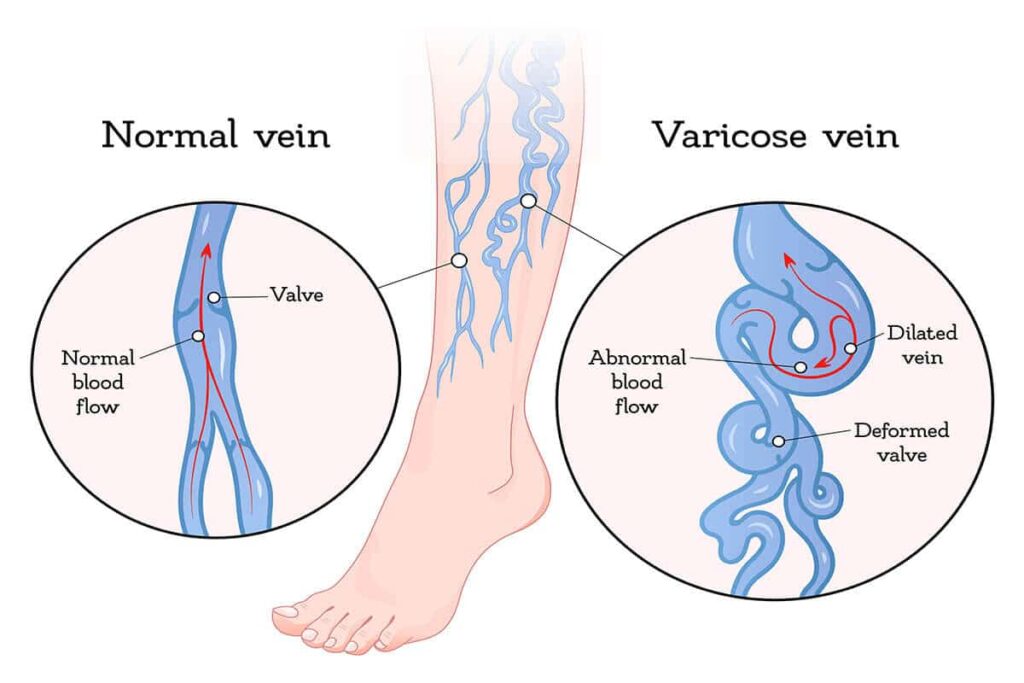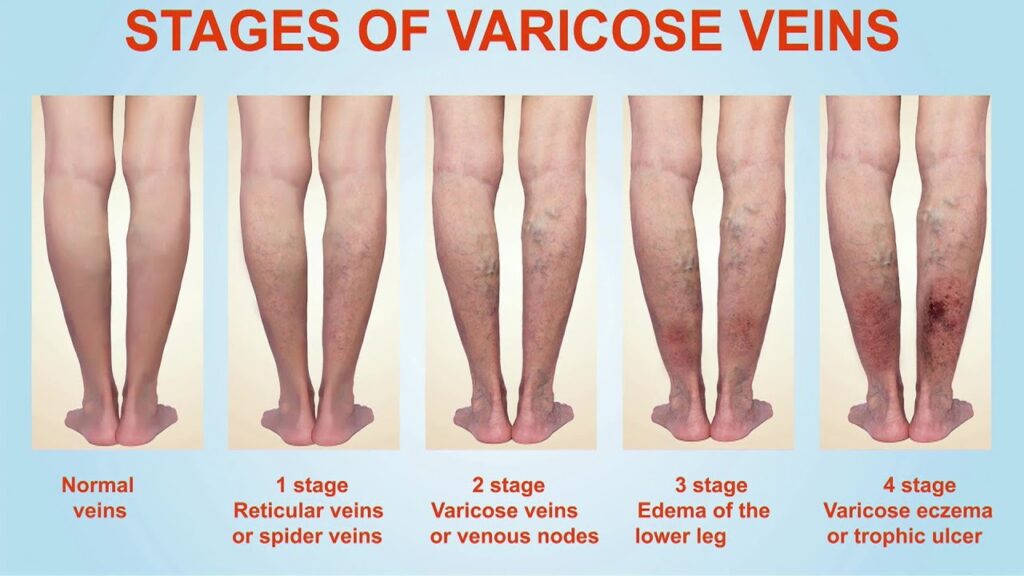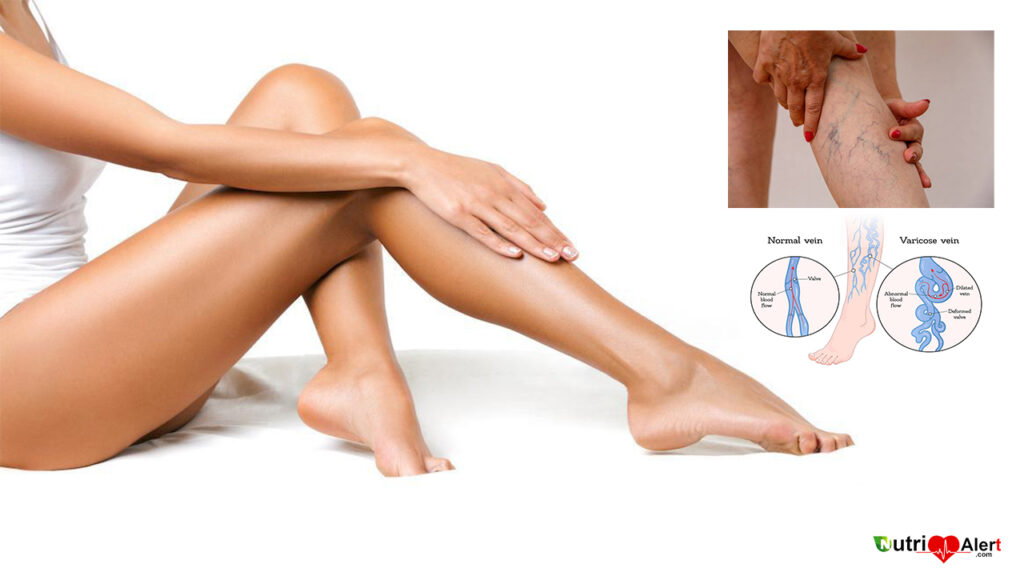What’s Varicose veins
Blood is carried to the heart through veins. They all feature a one-way valve that facilitates the blood flow to your heart; picture it as a turnstile. Now consider what would occur if that “turnstile” ceased to operate. When it comes to varicose veins, the same thing occurs. Because of the damage to this one-way valve, blood is accumulating in your veins. An ensuing swelling and discomfort occur.

In addition to making your skin sag, varicose veins are rope-like, blue or red, and can even be visible. According to the Office on Women’s Health, they occur most frequently on the thighs, inside of the leg, and the back and front of the calves.
Foods that affect your Brain and reduce your intelligence | Breast cancer patients can choose a smaller surgery for cure
Where do Varicose veins come from
The three forms include telangiectasia varicose veins, reticular varicose veins, which are red and clustered closely together in a network, and trunk varicose veins, which are thick and knobbly (thread or spider veins: small clusters, can appear on our face and legs). Varicose veins affect women more frequently than males because, according to study, female hormones relax the walls of veins, increasing the risk of valve leakage.

Family Background
We’re sorry to break it to you, but you have a higher chance of getting varicose veins if your mother did. The National Heart, Lung, and Blood Institute estimates that 50% of people with varicose veins have a family history of them.
Age
Your veins’ valves may not function as well as they did when you were younger as you get older. This adds to the list of varicose vein risk factors.
Gender
I’m sorry, but the hormonal changes you go through and using birth control tablets can increase your risk.
Pregnancy
Not only does your expanding baby put strain on your bladder, but it also puts pressure on the veins in your legs. Fortunately, three to twelve months following delivery, the veins typically get better.
being obese or overweight
Your veins are put under more pressure by this extra weight, increasing the danger.
Standing or sitting for long periods
We’re addressing you, office personnel. Long periods of time spent in one posture make your veins work harder, which puts you at risk.
existing blood clots
If your legs or veins have been damaged in any way, this could weaken them and increase your risk of getting varicose veins.
Varicose Veins affected areas
- varicose veins upper thigh
- varicose veins hands
- varicose veins face
- varicose veins scrotum
- varicose veins nose
- varicose veins knee
- varicose veins groin
- varicose veins uterus
- varicose veins vulva
- varicose veins labia
- varicose veins arms
How to Prevent Varicose Veins from Getting Worse
- Regular exercise
- If you’re overweight, lose weight
- Don’t spend a lot of time sitting or standing
- Avoid wearing constrictive clothing
- Make sure you raise your feet
- Put on support hose
- Purchase a compression hose
Treatments Available for Varicose Veins
Sclerotherapy
The ideal candidates for this conventional therapy are minor varicose veins. A drug is injected by the doctor, causing the vein to swell shut. The vein consequently disappears after a few weeks.
Closure mechanism
This can be the best course of action for you if your varicose vein is just below the skin’s surface. To seal the vein, we take a piece of adhesive material and implant it there. After that, blood flow resumes to normal.

